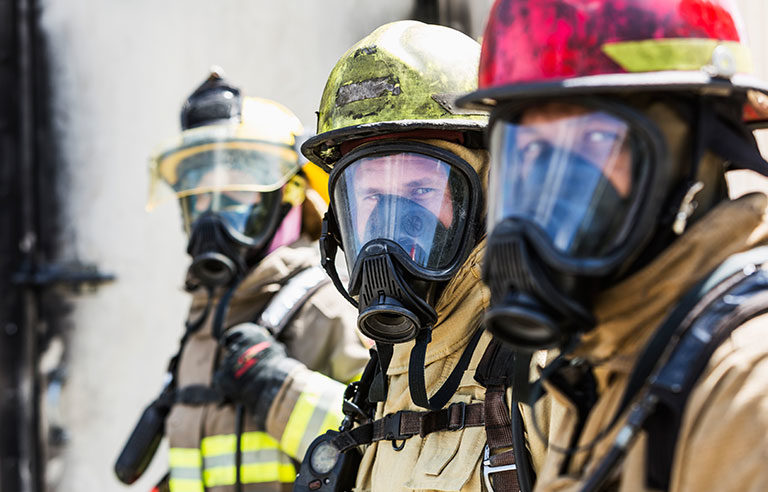Bulletin warns firefighters about facepiece ‘crazing’

Photo: Susan Chiang/iStockphoto
Tumwater, WA – Thermal stress caused by intense heat during live fires, including live-fire training exercises, could cause the facepiece lenses on firefighters’ self-contained breathing apparatus to worsen rapidly and fail, warns a new hazard bulletin from the Washington State Department of Labor and Industries.
The bulletin cites seven fatalities that occurred between 2002 and 2011 – among them, five career firefighters, one volunteer firefighter and one fire instructor – in which evidence indicated “catastrophic thermal degradation” to the facepiece lens.
Washington L&I recommends scanning the facepiece lens for crazing, which is a series of fine cracks, as well as looking for other damage during SCBA inspections, including warping, bubbles, holes, gaps and discoloration on the lens. Any lens that is damaged must be removed from service immediately and never reused.
“Thermal performance limitations of SCBA facepiece lenses need to get factored into fire safety planning, procedures, fire evaluations, equipment selection/use/care, and safety training,” Washington L&I officials state in the bulletin. “For example, evaluating fuel loading during training fires can help determine possible solutions to reduce heat flux exposure to firefighters and to better manage firefighters’ maximum exposure time and proximity to radiant heat sources.”
For questions or additional information, contact Chief Deputy State Fire Marshal Chad Cross, Washington State Fire Training Academy, at (425) 453-3000 or [email protected].
Post a comment to this article
Safety+Health welcomes comments that promote respectful dialogue. Please stay on topic. Comments that contain personal attacks, profanity or abusive language – or those aggressively promoting products or services – will be removed. We reserve the right to determine which comments violate our comment policy. (Anonymous comments are welcome; merely skip the “name” field in the comment box. An email address is required but will not be included with your comment.)

